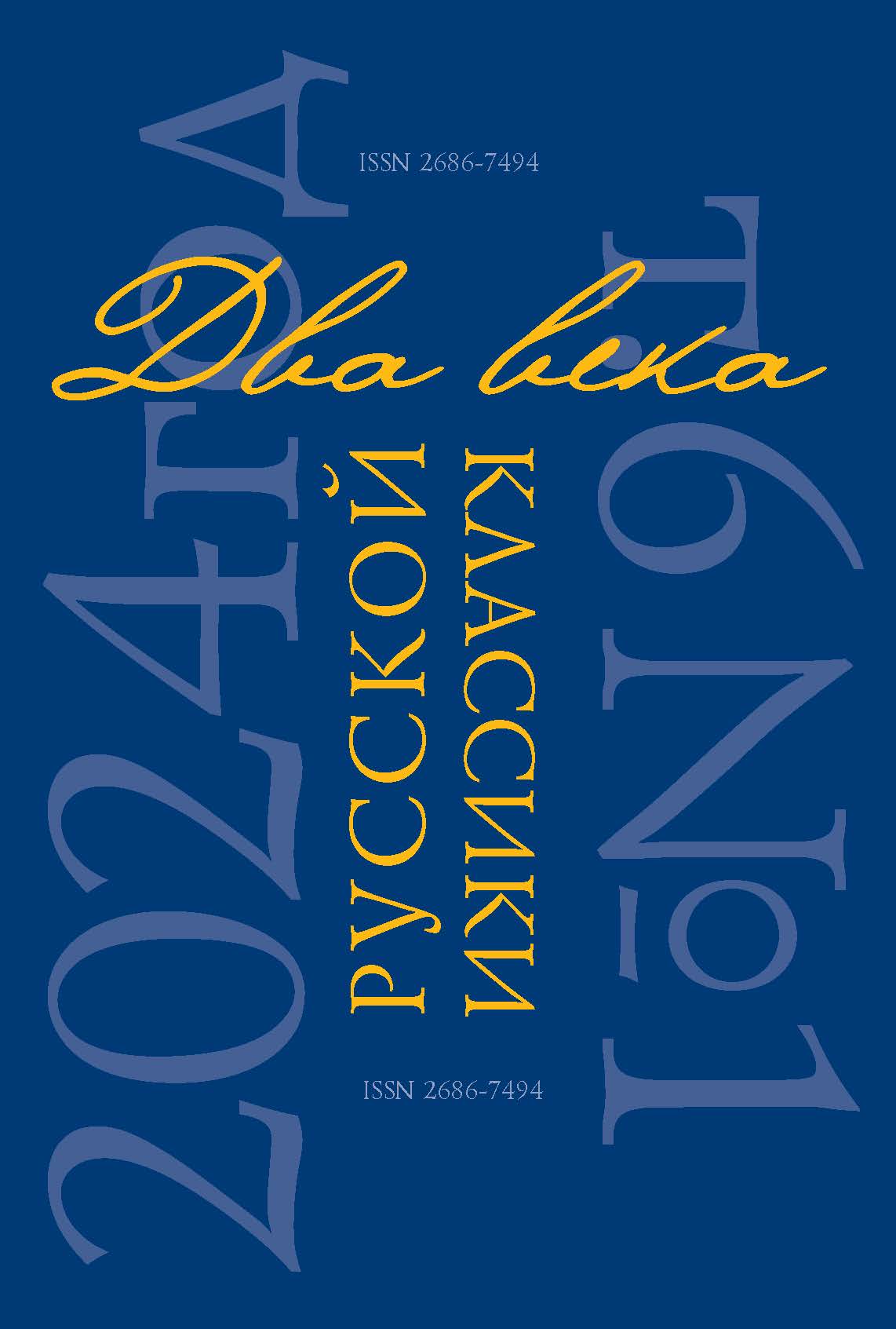Abstract: The article considers novels The Life and Adventures of Tikhon Trostnikov (1843) by N. A. Nekrasov and Humiliated and Insulted (1861) by F. M. Dostoevsky as experimental works in which the authors sought to combine European and national traditions. The reference to biographical material, the use of the structural method allowed to discover the similarity in genre content of the works and the difference of ideological attitudes of the authors. Both novels were created as autobiographical works, adventurous and satiric, included elements of “natural essay”, but each of the authors sought to use national genre content: Nekrasov's is a folk drama, and Dostoevsky refers to the traditions of Old Russian calendar literature, a literary story that shows the verification of the Holy Scriptures. Nekrasov failed to create a complete work, largely due to the narrative form, in which in some cases the parody begins to appear. But Dostoevsky managed to bring the novel to a new level, especially in his last works The Raw Youth and The Brothers Karamazov. Performing the task of “restoring the lost man”, Dostoevsky turns to the church calendar, Gospel allusions and parable plot.
References
Budanova, N. F. “Unizhennye i oskorblennye” [“Humiliated and Insulted”]. Dostoevskii: Sochineniya, pis'ma, dokumenty [Dostoevsky: Works, Letters, Documents]. St. Petersburg, Pushkinskii dom Publ., 2008, pp. 181–185. (In Russ.)
Zakharov, V. N. Imya avtora — Dostoevskii [The Author's Name is Dostoevsky]. Moscow, Indrik Publ., 2013. 456 p. (In Russ.)
Zakharov, V.N. Problemy istoricheskoi poetiki [Issues of Historical Poetics]. Moscow, Indrik Publ., 2012. 264 p. (In Russ.)
Mostovskaya, N. N. “Gogol' v vospriiatii Nekrasova” [“Gogol as Perceived by Nekrasov”]. Nekrasovskii sbornik [Nekrasov Collection], vol. VIII. Leningrad, Nauka Publ., 1983, pp. 25–35. (In Russ.)
Mostovskaya, N. N. “Parodiia v proze Nekrasova (satiricheskoe masterstvo; polemika)” [“Parody in Nekrasov's Prose (Satirical Skill; Polemics)”]. Nekrasovskii sbornik [Nekrasov Collection], vol. IX. Leningrad, Nauka Publ., 1988, pp. 54–68. (In Russ.)
Romodanovskaya, E. K. “Ot tsitaty k siuzhetu. Rol' povesti-pritchi v stanovlenii novoi russkoi literatury” [“From Quotation to Plot. The Role of Story-Parable in the Formation of New Russian Literature”]. Evangel'skii tekst v russkoi literature XVIII–XX vekov [The Gospel Text in Russian Literature of the 18th–20th Centuries], collection of scientific papers. Petrozavodsk, Izdatel'stvo Petrozavodskogo universiteta Publ., 1994, pp. 66–75. (In Russ.)
Fedorova, E. А. “Peterburgskie tipy v proze N. А. Nekrasova i v romane F. M. Dostoevskogo ‘Prestuplenie i nakazanie’.” [“Petersburg Types in N. A. Nekrasov’s Prose and in the Novel ‘Crime and Punishment’ by F. M. Dostoevsky”]. Mundo eslavo – journal of slavic studies, no. 16, 2017, pp. 93–98. (In Russ.)
Sharipova, D. D. “O vliianii zhanra bul'varnogo romana na tvorchestvo F. M. Dostoevskogo: ‘Brat'ia Karamazovy’.” [“On the Influence of the Pulp Fiction on F. M. Dostoevsky’s Works: ‘The Brothers Karamazov’.”]. Dostoevskii i sovremennost'. Materialy XXXI Mezhdunarodnykh Starorusskikh chtenii 2016 goda [Dostoevsky and the Present. Materials of the 31st International Old Russian Proceedings 2016]. Veliky Novgorod, Novgorodskii muzei-zapovednik Publ., 2017, pp. 182–190. (In Russ.)
Shpilevaya, G. A. “ʽZhizn' i pokhozhdeniia Tikhona Trostnikova’ i traditsii avantiurnogo romana” [“ʽThe Life and Adventures of Tikhon Trostnikov’ and the Traditions of the Adventure Novel”]. Nekrasovskii sbornik [Nekrasov Collection], vol. XIV, Leningrad, Nauka Publ., 2008, pp. 103–111. (In Russ.)
Yurkova, Z. M. Sennaya ploshchad'. Vchera, segodnya, zavtra [Sennaya Square. Yesterday, Today, Tomorrow]. Tsentrpoligraf Publ., 2011. 272 p. (In Russ.)
Egeberg, Erk. Na poroge masterstva: Ot “Unizhennykh i oskorblennykh” k “Prestupleniiu I nakazaniiu”. Dostoevsky Studies: The Journal of the International Dostoevsky Society, no. 20, 2016, pp. 47–58. (In Russ.)
Gerigk, H.-J. Ein Meister aus Russland. Beziehungsfelder der Wirkung Dostojewskijs. Vierzehn Essays. Heidelberg, Universitätsverlag Winter, 2010. 215 s. (In German).
Gibson, A. Boyce. The Religion of Dostoevsky. Eugene, OR: Wipf&Stock, 2016. 224 p. (In English).
Müller, L. Die Begegnung und Auseinandersetzung von östlichem und westlichem Christentum im Leben und Werk Dostojewskijs, Tolstojs und Solov’evs. Tausend Jahre Christentum in Russland. Zum Millennium der Taufe der Kiever Rus, Hrsg. K. C. Felmy, G. Kretschmar, F. von Lilienfeld, C.-J. Roepke, Göttingen, Vandenhoeck & Ruprecht, 1988, pp. 78–82. (In German).









